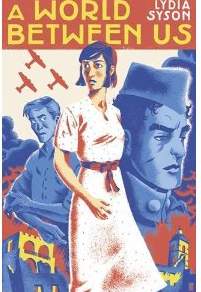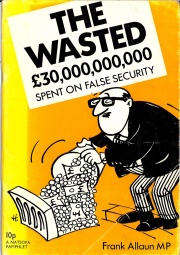A World Between Us by Lydia Syson
Hot Key Books ISBN 978-1-4714-0009-4
Taking part in the march on the 75th anniversary of Cable Street in October 2011 made me feel very proud of the history of working people’s opposition to fascism, whether on their streets in 1936 or in the protests against fascist groups such as the English Defence League. As the economic system nationally and globally goes into decline there are some similarities with the 1930s in Britain. Unemployment is rising, we have a Conservative government that is cutting the benefits of the poor in its strategy to pay off a decifit caused by the monied class. Unlike the 30s we do not have a vibrant political organisation such as the Communist Party which provided working class people with not just a political way forward but, in its actions in areas such as the East End of London, took the class struggle to the street. It is in this context that Lydia Syson has set her new novel.
 Lydia Syson’s A World Between Us explores some of the most important issues about how and why people (and young people in particular) get involved in political activity. Her book is set in London in the 1930s, at a time of a worldwide economic crisis and the mirroring rise of fascism. Her grandparents were involved in the Communist Party and were part of a movement that organised against the growing rise of fascism in this country and abroad, particularly in Spain.
Lydia Syson’s A World Between Us explores some of the most important issues about how and why people (and young people in particular) get involved in political activity. Her book is set in London in the 1930s, at a time of a worldwide economic crisis and the mirroring rise of fascism. Her grandparents were involved in the Communist Party and were part of a movement that organised against the growing rise of fascism in this country and abroad, particularly in Spain.
I wanted to write about the Spanish Civil War and its effects in this country because my children didn’t know about it. It was important on many levels, not just in terms of people going to fight in Spain but in the whole political culture of that time.
Like many people in the 30s, and particularly in the East End of London, her grandparents took part in the large political demonstrations such as Cable Street:
I wanted to show in the book how people got swept up into the street politics and how different life was for them. Being a communist now is seen in a negative way and that is how my children see it. I wanted to show why people did become communists and that it was a response, a gut feeling, about the political and social situation they were in.
The novel begins with the Cable Street demonstration when the British Union of Fascists attempted to march through a largely Jewish and workingclass area of East London:
Missiles kept flying overhead – saucepans,bottles, rotten vegetables, god knows what. It was like a tide on the turn, with banners and placards dipping and rearing. There were all sorts here, not just East Enders. Even the side streets were packed with protestors.
It is at this march that the two main characters meet, trainee nurse Felix (Felicity) and young communist Nat. He is about to go to Spain, and explains to her why he thinks being a communist is important:
It’s changed my life really. I can see everything clearly now. It gives you hope, doesn’t it? When you realise how things could be much better, so much fairer? And that you can do something about it.
One of the reasons Lydia chose to write about this era was to show young people now how the Spanish Civil War did motivate young people of that generation to not just become politically active, but to go and fight in Spain.
When I was writing the scene about Cable Street I wondered if my audience, young teenagers, would understand what it meant to be on a demonstration and being threatened by police on horses. But at the same time I saw on the news the student demonstrations and it struck me that this will make sense to a different generation of young people.
One of the startling aspects of British people going to take part in the Spanish Civil War was their age. Like Nat and Felix in this book, many of them were teenagers when they made that decision. Lydia captures the horror of war, and for me reading Felix’s story as a nurse on the frontline gave it a potency that is quite different from reading about a battle:
Leaning on the doorjamb, Felix began to tremble. She couldn’t go any further anyway: a body lay at her feet,blocking the way. She had nearly stumbled onto it. She bent to apologise, but as she put a hand on the man’s arm, she could feel that already beginning to stiffen….There were bodies everywhere.
In AWBU Lydia is writing fiction, but her motivation in writing the novel was to remind her readers of the importance of the Spanish Civil War in the history of Europe in the 20th century.
I used the history of the war as a framework but I was committed to making the novel mainstream. I wanted it to work on different levels in terms of its romance and its politics. I hope the politics will seep into readers’ consciousness so that later on the significance of the SCW will be understood.
AWBU is published by Hot Key Books for young adults but I think it is a book that can be read and appreciated by people of all ages. The love story between Felix and Nat is beautifully written and shows how political activity can bring people together in loving relationships. The novel finishes in 1939 and one of the reasons why it is important to understand the politics of the War is that the defeat of republican Spain led onto the Second World War. Lydia’s book is well researched and is a good beginning for further reading and studies in what is a crucial history of Britain and Spain in the 30s.
To buy it see News from Nowhere
See Lydia’s blog for links tothe Spanish Civil War – http://www.lydiasyson.com/read-more-about-the-background-to-a-world-between-us/
It is also published as a Multi-touch iBook2 from Apple iBook store with lots more info on the War.
Also see www.wcml.org.uk for more info on Spain
Bernadette Hyland







